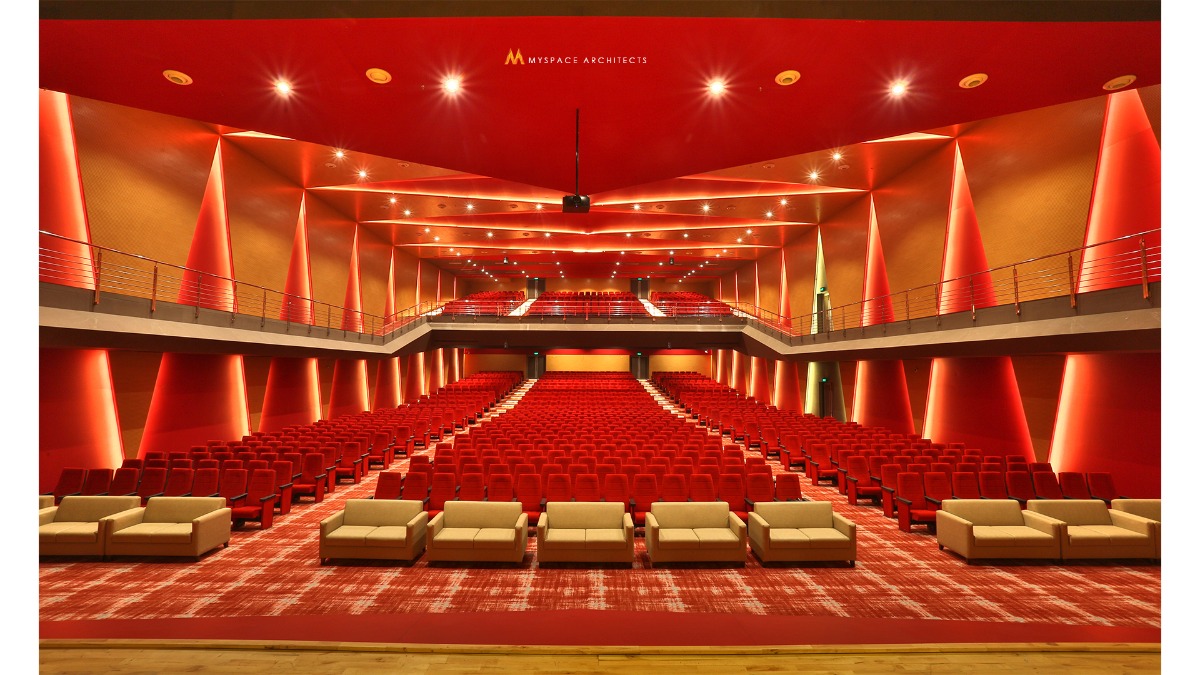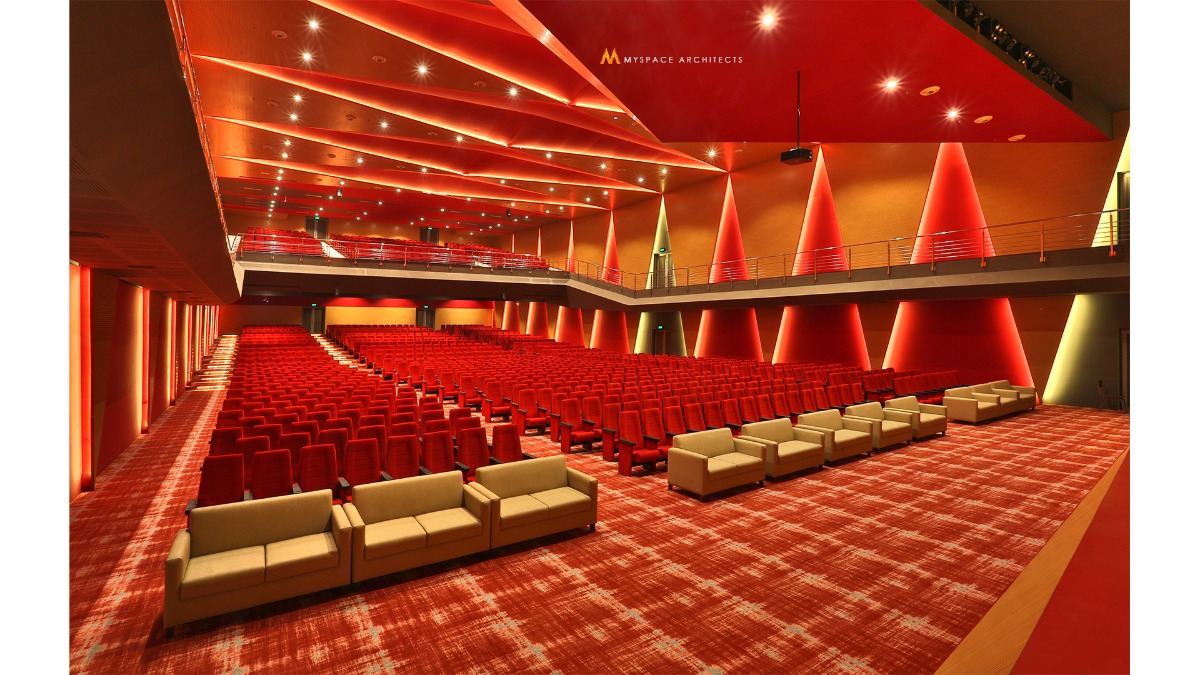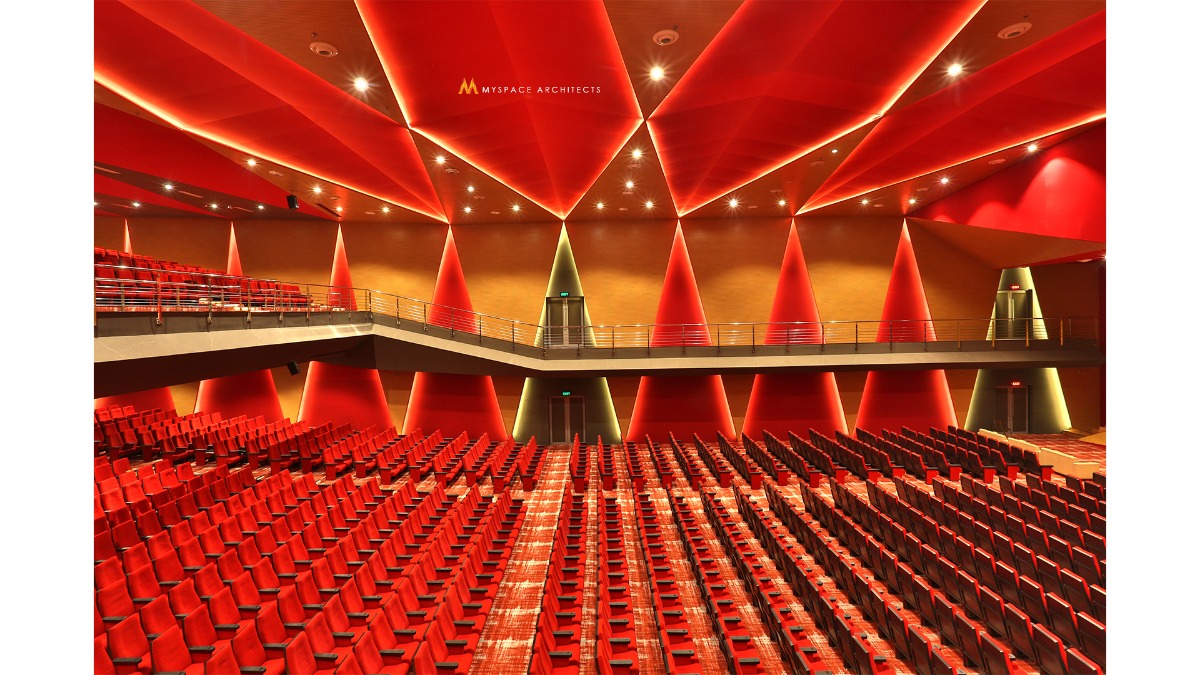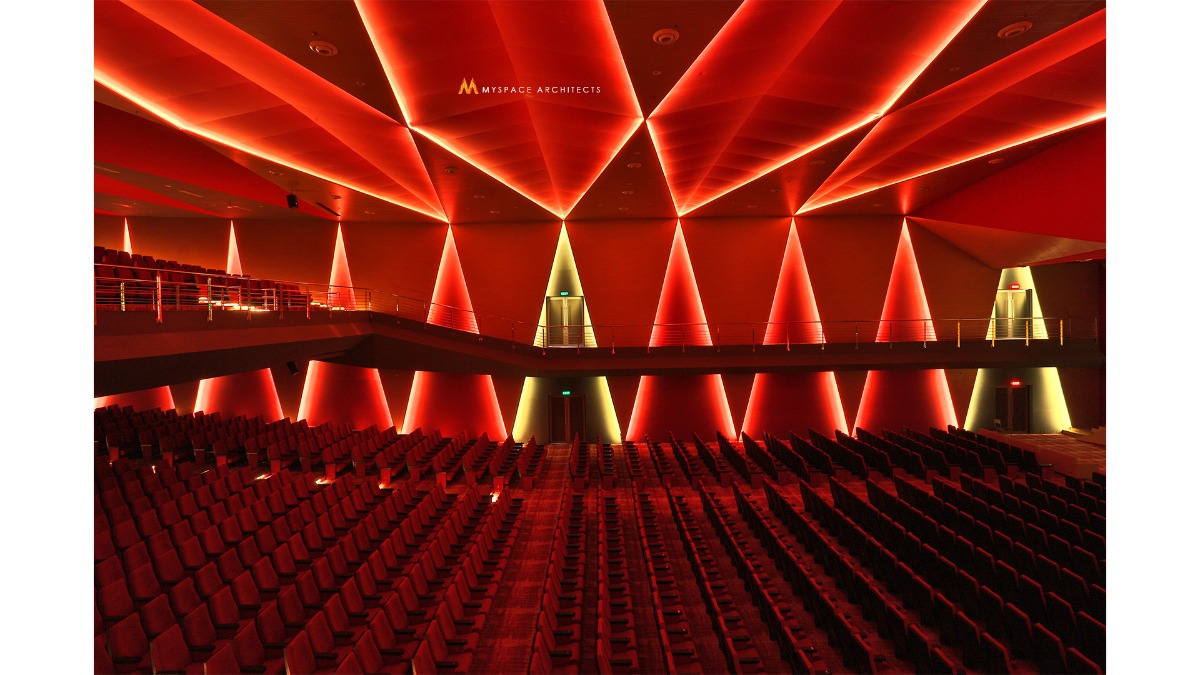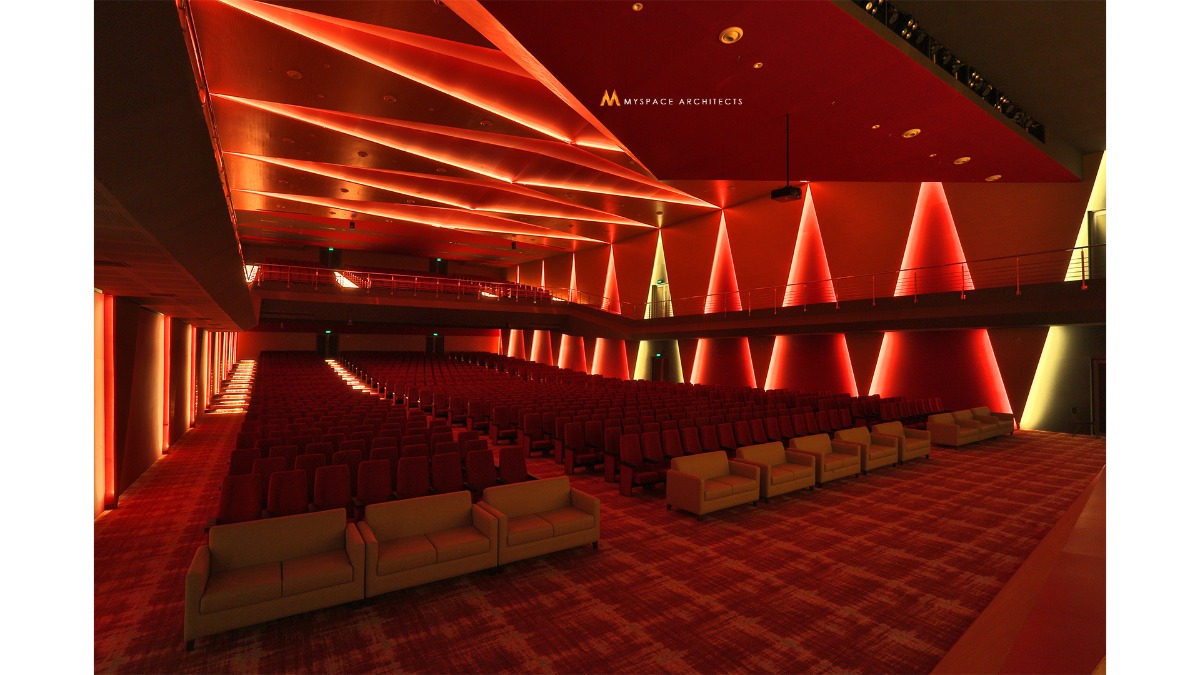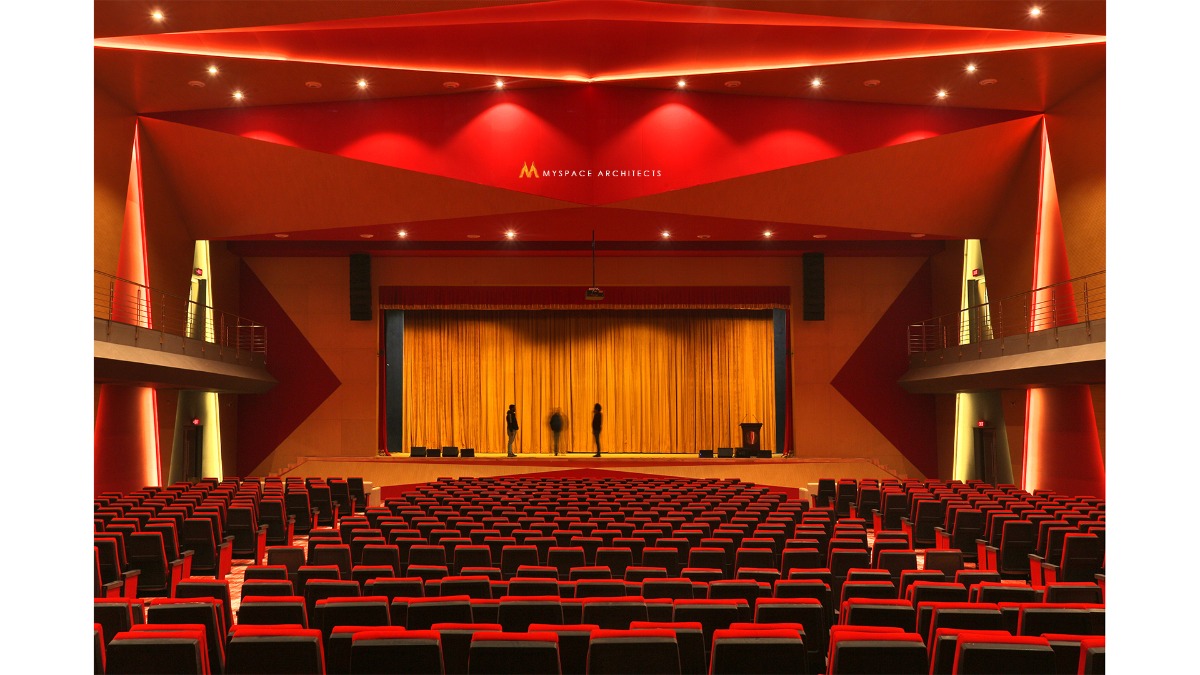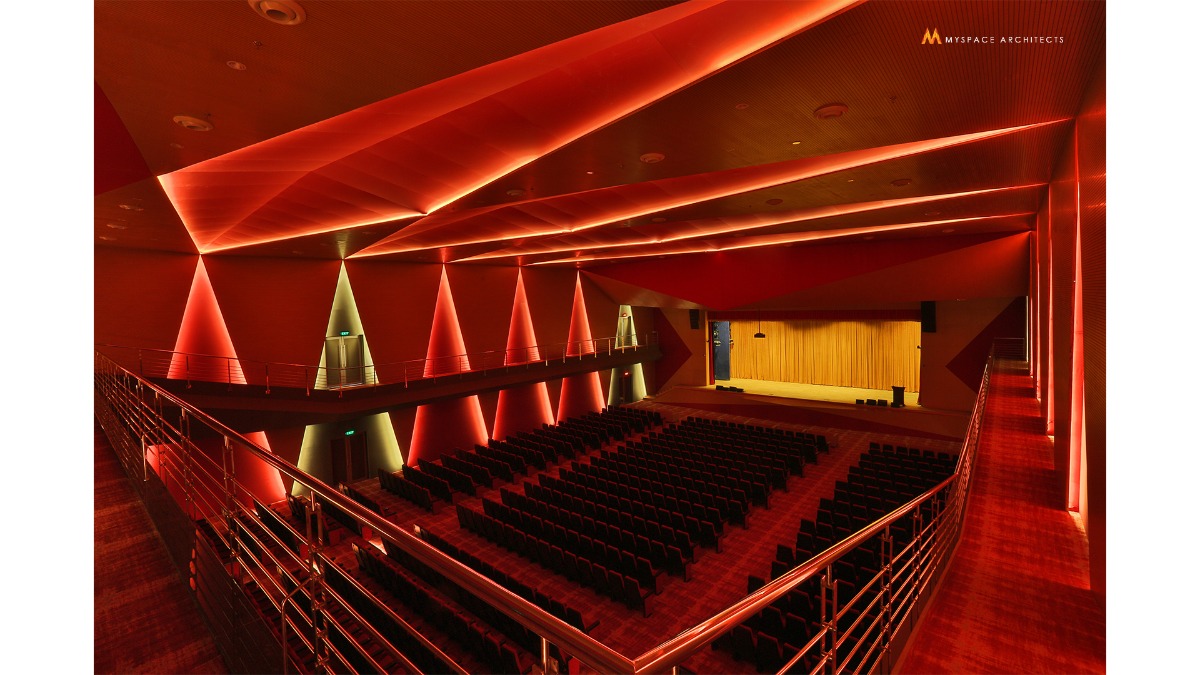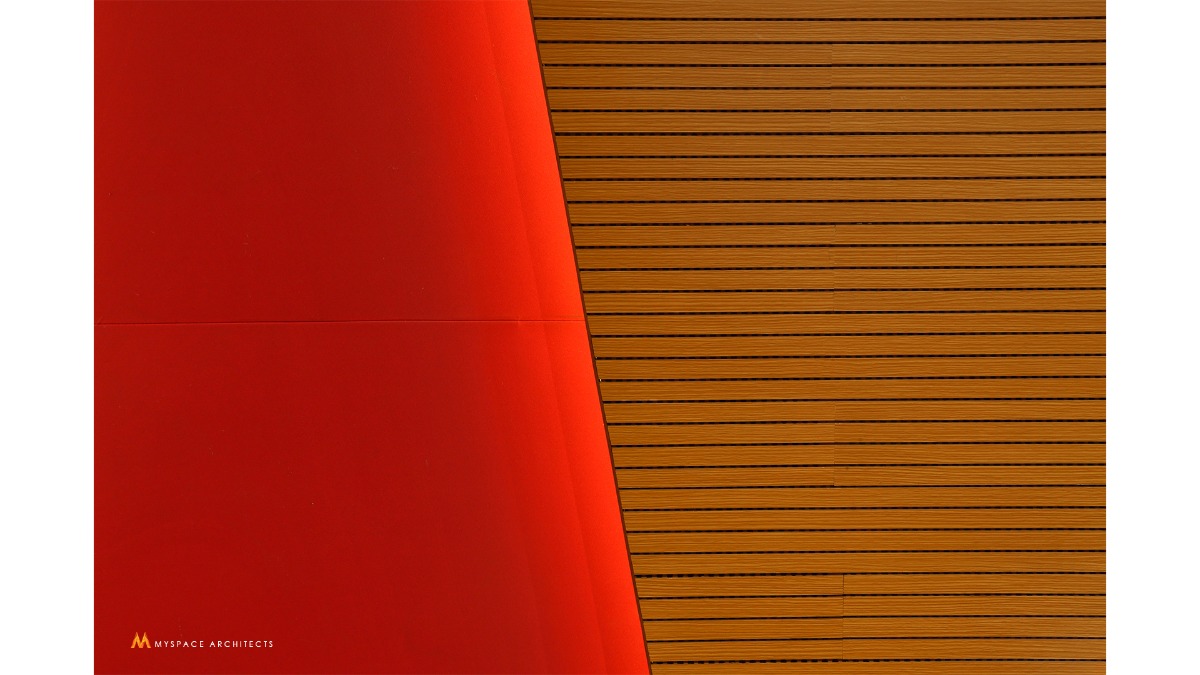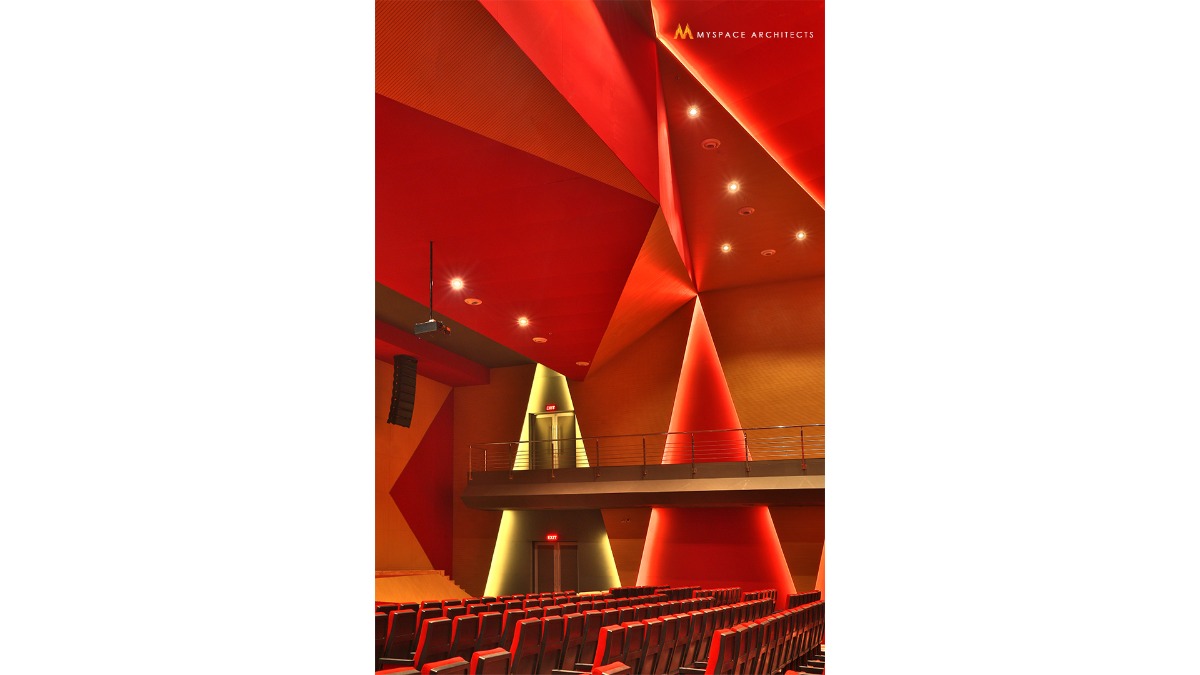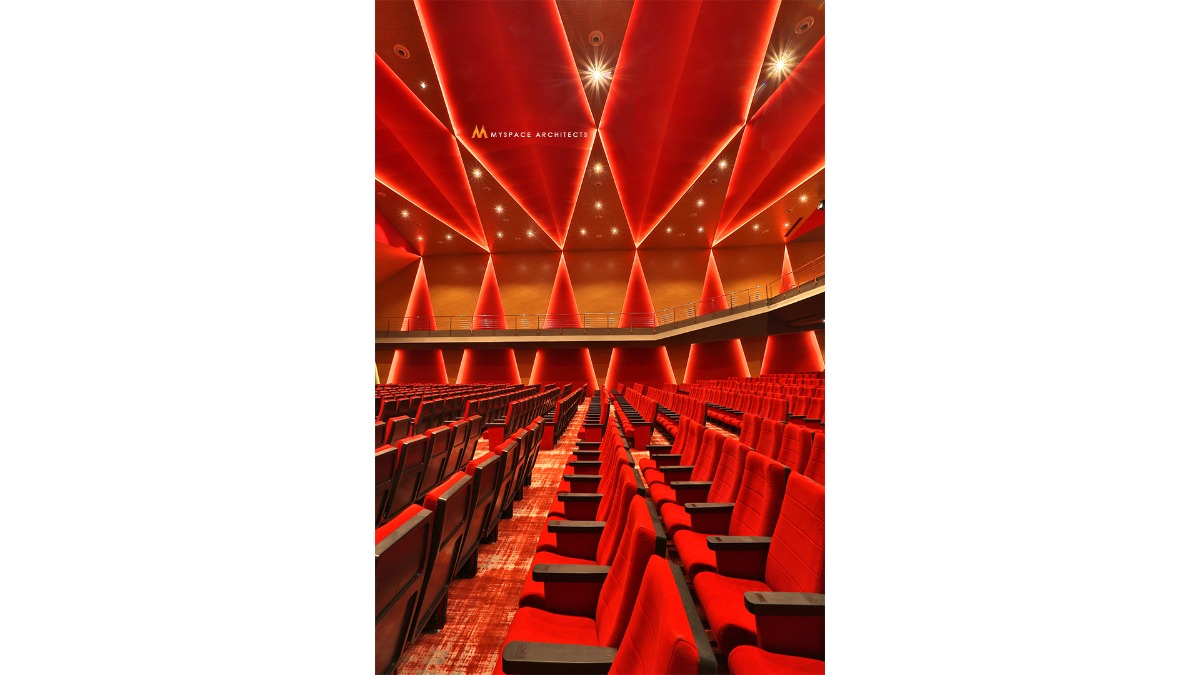Red Bloom – An
Auditorium Nurturing Creativity | Myspace Architects
The auditorium was the
part of a school project, which had stayed half constructed for long, due to
its unforeseen design problems. While the architect was commissioned, project
required an entire transformation that would elevate the spatial experience to enhance
and nurture the creativity of young minds.
Named accordingly, Red Bloom today stands afoot inside the school campus
in Ludhiana, India with a seating capacity of 1606 students.
The project was commenced
with a critical site study to draft its revival game plan. Thorough research
gave out that the bottom of the balcony structure was creating a visual blockage
for the rear rows in the base level seating. Its long-stretched length was also
feared to create a phenomenon called “sound-shadow” and affect the general
sound quality below the balcony. To solve this, structural inputs like cutting
off a portion of the balcony had to be initiated.
Next challenge was to
work out correct sightlines for the balcony level. Stage views of the end rows
were blocked by the balcony edge even after cutting it. This was resolved by
adding an optimum slope by a calculated degree. The hall had a lot of echo and
there were many openings that let noises. Thus, the openings had to be all
covered up.
There were many fire
staircases on the lateral sides of the auditorium, but at the balcony level,
there was provision for only back exits. For ease of evacuation, the balcony
level got additional corridor-like augmentations, reaching the by-standing
staircase lobbies from both sides.
Visual experiences
help stir innovation, reach physical creativity, and achieve higher levels of breakthroughs
in students. As spotlights, track lights and moving lights, all help in adding
drama to performances, Red Bloom cleverly conceals them with angled reflectors
near the stage edge. The seating area also has dimmable warm ambient lighting,
formed by light strips concealed in coves, which provides option to choose
between various moods for different events.
The form concept is
inspired by origami (Japanese paper-folding art), and patterns formed by its
creases. The ceiling has several high and low points to create triangular
deformations achieving the appearance of fold lines. This play of 3D form is helpful for an auditorium because, those
angled surfaces act as sound absorber and easily conceal HVAC, lighting, and
other service fixtures. This overly complicated network of technical
equipment is accessed by the well-planned and concealed catwalk.
The entire auditorium
has triangular red and grey fabric panels outlined with recessed
lighting. The cantilevered balcony has a grey band taped along its railing,
visually separating the two levels. The dominantly wooden stage area is
highlighted by triangular sections, angling toward its center from all sides.
The entire space is covered with wooden slats and acoustic fabric to increase
sound absorption. The quilted seats aligned in crisp military-like rows and
beneath them, is a neatly spread custom red and beige floor carpet. Support
facilities like the green rooms, restrooms, and food court, all surround this
auditorium hall, making it functionally sufficient.

